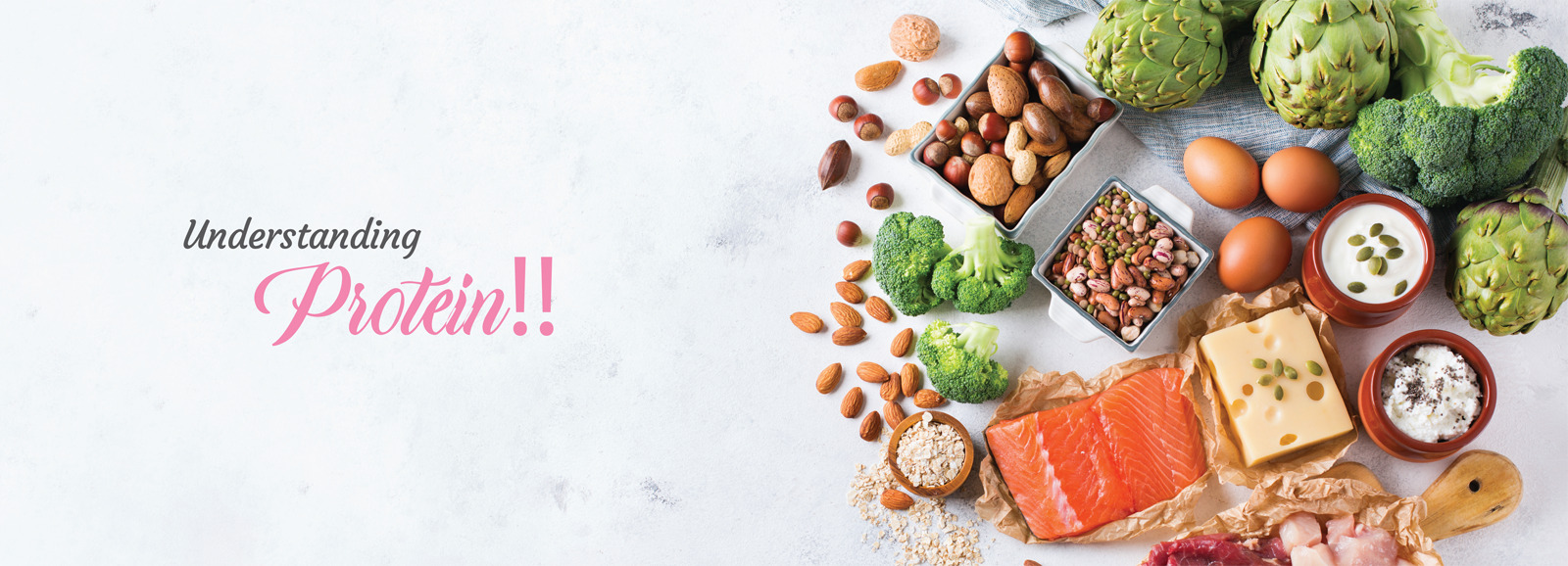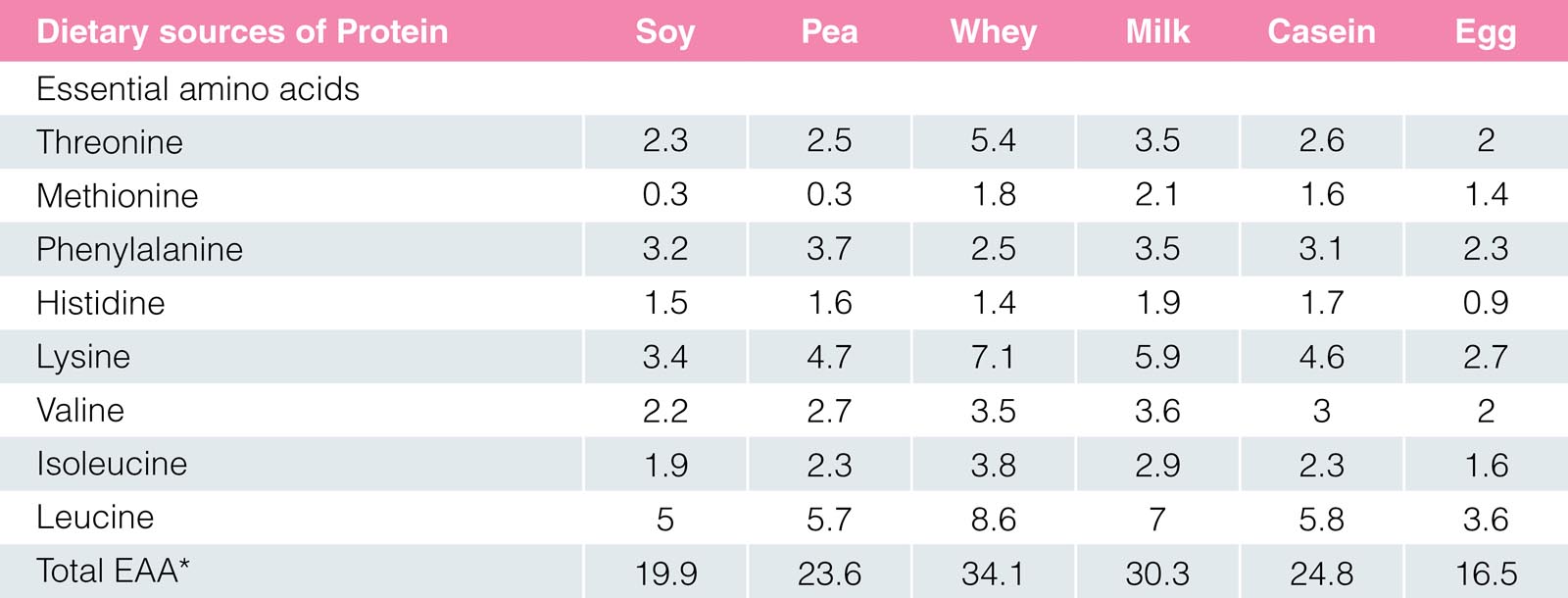
Proteins are critical component of every cell in the human body. They are termed as “Body Building Foods” because every cell, such as that of, skeletal muscle, bone, hair, fingernails, cartilage, skin and blood requires protein to build, grow and repair. Proteins also play an important role in producing enzymes and hormones, that are vital for regulating metabolism, growth and other functions essential for a healthy human body.
Proteins become critical for the healthy development and growth of fetus and the newborn. Its deficiency may have adverse clinical manifestations:

All Proteins are not equal:
The Recommended Dietary Allowances (RDA) are stated in general as “grams of protein”,
However, proteins differ in terms of their building blocks i.e Amino Acid and smaller molecules, they are linked together like beads on a string that make up each molecule of protein.
Essential Amino Acids:
There are 20 different types of amino acids, of which 9 are considered Essential Amino Acids (EAA). Since the body cannot produce these, they must be supplemented from food or nutritional supplements. These 9 EAA are listed as Histidine, Isoleucine, Leucine, Lysine, Methionine, Phenylalanine, Threonine, Tryptophan, and Valine.
Plant vs Animal Proteins:
There are two main sources of proteins: animal proteins like milk, meat, egg, poultry and fish, and plant proteins like pulses, legumes, nuts, seeds, and cereals.
Most plant proteins are considered incomplete, as they lack in one or more EAAs. Hence, vegetarians are advised to eat a variety of pulses & nuts to get all the different EAAs, but they are likely to struggle to get adequate proteins due to lower protein density (grams of protein per 100gm of food item), of most plant sources.

On the other hand, most animal proteins are complete proteins, as they contain all of the 9 EAAs. Whey protein is loaded with EAAs; hence it is a complete protein and is particularly high in important Branched-chain Amino Acids (BCAAs).
BCAAs are a group of three essential amino acids: Leucine, Isoleucine and Valine that supports muscle growth.
Whey protein (from milk) appears to be particularly effective at stimulating growth in humans. In fact, human breast milk is 60% Whey, compared to only 20% of whey in cow’s milk.
Being soluble, Whey comes out as the liquid while making cheese (paneer), and the insoluble Casein protein (80% in cow milk) stays back in the cheese. This liquid goes through “micro-filtration” to produce WPC (Whey Protein Concentrate) and through an “ultrafiltration” process to produce WPI(Whey Protein Isolate). These fluids are then evaporated to produce the protein powders.
While both WPI and WPC are rich in protein and amino acids, WPI provides 90% pure protein and negligible fat and lactose content, whilst WPC contains 80% protein. This makes WPI one of the purest sources of high-quality protein. The minimal traces of lactose in WPI, makes it easier on the stomach, and more suitable choice for those allergic or intolerant to lactose/dairy products. High protein concentration of WPI keeps you full for longer, provides better sugar control and fulfills one’s protein requirement easily.
The table below shows Amino acid content of various dietary protein sources, It may be noted that, Whey Protein (amongst all dietary sources), offers maximum amount of EAAs, making it balanced & comparatively superior form of protein.

To conclude, there are large variations in amino acid content and composition between different plant-based protein sources when compared with Whey Protein. To take adequate amounts of all EAAs you must include variety of protein sources in your diet, and if protein supplements are required, look for options with Whey Protein Isolates.
* Amino acid profile is only for 8 of the 9 EAAs, since the measurement was by acid hydrolysis method, in which tryptophan gets decomposed, which precludes the ability to measure this.

© 2020 CHPL I All right reserved
© 2020 CHPL I All right reserved